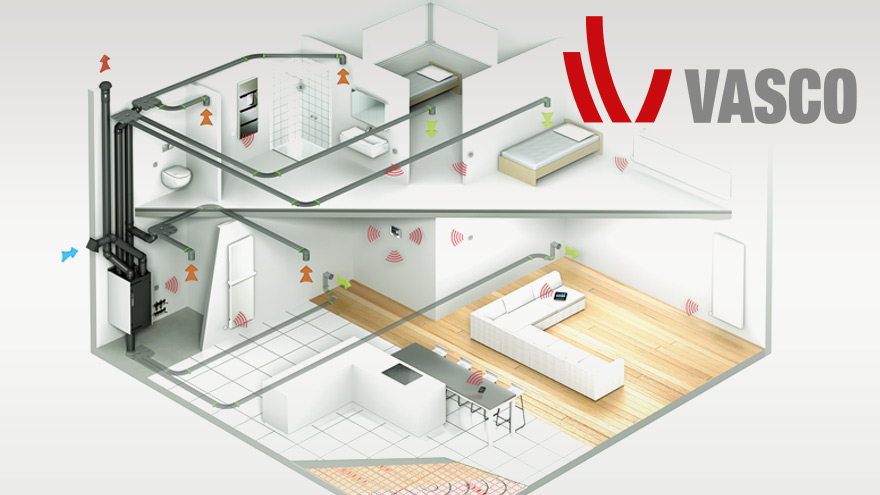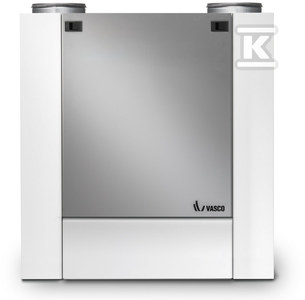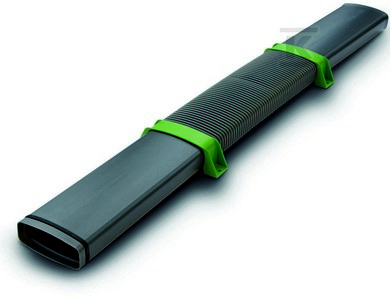The heat recovery system is now becoming a standard in single-family houses. Since the requirements for the indicator specifying the Primary Energy required for heating were reduced at the beginning of 2021, every investor must at least consider using ventilation with heat recovery in their home. These are the requirements of construction law, but more and more people are convinced that such a solution significantly improves the comfort of life at home.

The advantage of heat recovery is not only saving energy for heating, but also, and perhaps above all, significantly improving the air quality in the house. Constant ventilation ensures a constant supply of fresh air, which is cleared of smog thanks to the filters in the recuperator, and there is no effect of cold air from the previously used window vents. In addition, recuperation removes excess moisture from the interior, which is particularly severe on hot days, while in winter it may cause the multiplication of microorganisms and the development of mold.
The mentioned advantages of recuperation result in a continuous increase in its popularity and interest among investors. The installation of the system is so simple and intuitive that it can be performed by installers already on the construction site, e.g. when installing a heating system. This will be possible especially if they choose a simple system solution, the manufacturer of which provides a detailed executive design enabling proper execution and commissioning even with little experience.
Check out VASCO recuperators at the Onninen wholesaler
Heat recovery units for Vasco family homes
 Such a system was developed by the Belgian company Vasco, which has been developing a group of products covering a comprehensive heat recovery solution for single-family houses for 12 years. Vasco produces recuperators, as well as a complete system of ducts and accessories for the ventilation system with heat recovery. The holistic approach distinguishes the Vasco company, which designed the system from scratch: a recuperator, i.e. a central unit that drives home ventilation with heat recovery and a comprehensive system of ducts and their connections (roof, wall, field intakes) and additional elements that enrich the system and extend its functionality ( filters of various classes, humidifier).
Such a system was developed by the Belgian company Vasco, which has been developing a group of products covering a comprehensive heat recovery solution for single-family houses for 12 years. Vasco produces recuperators, as well as a complete system of ducts and accessories for the ventilation system with heat recovery. The holistic approach distinguishes the Vasco company, which designed the system from scratch: a recuperator, i.e. a central unit that drives home ventilation with heat recovery and a comprehensive system of ducts and their connections (roof, wall, field intakes) and additional elements that enrich the system and extend its functionality ( filters of various classes, humidifier).
Vasco paid special attention to creating a comprehensive and quiet system, because from the very beginning this requirement was considered by the company to be crucial in convincing customers to install mechanical ventilation in their homes, which is usually associated with the noise known from ventilation in public facilities, shopping centers or factories. work. Silent heat recovery units, especially the latest DX model, contribute to achieving the effect of quiet ventilation operation  available in the nominal flow range from 400 to 580 m 3 /h, which is sufficient for most single-family houses. It has been refined to achieve record low acoustic power when supplying air to rooms. No less important for the overall effect are the EasyFlow channels - an HDPE distribution system with a specially aerodynamically designed cross-section along with noise-absorbing elements. The EasyFlow duct system has a total height of 6 cm and allows the flow of up to 75 m 3 /h of air through one channel, which makes installations very simple, and therefore particularly easy to perform correctly and start the system with a reduced risk of implementation errors.
available in the nominal flow range from 400 to 580 m 3 /h, which is sufficient for most single-family houses. It has been refined to achieve record low acoustic power when supplying air to rooms. No less important for the overall effect are the EasyFlow channels - an HDPE distribution system with a specially aerodynamically designed cross-section along with noise-absorbing elements. The EasyFlow duct system has a total height of 6 cm and allows the flow of up to 75 m 3 /h of air through one channel, which makes installations very simple, and therefore particularly easy to perform correctly and start the system with a reduced risk of implementation errors.
It is particularly important that in the case of purchasing the entire system, VASCO provides an executive technical design that includes not only the route of ducts, but also precise settings of Vasco supply and exhaust air dampers, which have as their unique feature a very precise and at the same time easy regulation of the air flow. air. Vasco anemostats have a scale ranging from 1-18, and the appropriate settings calculated by the designer are included in each project delivered to the complete Vasco system. In such a case, starting and adjusting the ventilation system only involves setting the anemostats in accordance with the design and confirming the correct air volumes after measurement with an anemometer. The system is so precise and predictable that additional adjustments will often be unnecessary.
Vasco has done a lot to make it easier for installers to create a heat recovery system, but above all, it is a system prepared for the end customer. For him, easy operation is important thanks to a smartphone application with a weekly programmer, information about the operation of the heat recovery unit and the necessary settings. The quiet operation of the ventilation system is also particularly important for the customer when installing the entire Vasco duct system, as well as the DX series recuperator. Vasco also offers additional devices, including the Crystall Round electrostatic anti-smog filters, which, thanks to the use of a special technology of electrical charging of smog particles, achieve the ability to purify the air at the level of absolute filters, removing virtually all contaminants from the air before it enters the interior of the house.
VASCO brand recuperators
VASCO for the installer
From the beginning of 2022, Vasco has launched the CashBack program for installers installing the Vasco heat recovery system. Installers who register on the Vasco website will be able to send scans of their purchase invoices with the Vasco heat recovery range after each purchase of a heat recovery unit and VASCO duct system components. In return, they will receive points in their account with which they will be able to collect e-coupons that can be used to pay for purchases in many online and stationary stores: Allegro, Empik, Morele.net, RTVeuroAGD, Decathlon, Zalando, Biedronka and many others. Information about the program and the registration page can be found at: www.vasco.eu .
Recuperation and air conditioning
Investors often ask whether heat recovery can also function as air conditioning. The answer to this question is not clear. Most heat recovery units have a bypass and the ability to cool rooms with colder night air, bypassing the exchanger. It is also recommended to reduce the supply air flow to minimum capacity on hot days and increase it during cooler nights. We will then be able to ventilate the building with cooler night air.
Check out VASCO recuperators at the Onninen wholesaler
But what about this air conditioning? When designing heat recovery, we make assumptions based on the minimum required amount of air needed for breathing - in this case, the number of one air exchange per hour will be the most correct, while when designing ventilation in such a way that it can provide air with parameters appropriate for air conditioning, it would be necessary to assume the number of air exchanges. at level 4-5 within an hour. An installation calculated for such indicators would be significantly oversized (much larger ducts, ventilation units), could cause too much draft in the rooms and would be uneconomical to use.
For an average-sized single-family house, the power of the freon cooler needed to cool the amount of supplied air would be within the range of 3-4kW, which will only allow us to subcool the ventilation air stream by a few degrees. Comparatively, to cool the living room in such a house, the air conditioner would have to have a power of 2.5-3kW.
The additional costs of such an investment should not be forgotten. The cost of purchasing and operating a freon cooler together with the unit, and the need to fully insulate the supply ducts to protect them against moisture condensation.
To sum up, heat recovery cannot replace the air conditioning system as such, and only by installing a freon cooler it is possible to reduce the temperature by several degrees - we will not achieve efficiency comparable to an independent air conditioning installation.
Check out VASCO recuperators at the Onninen wholesaler
Waldemar Tomczuk, Vasco
Iwona Gemborys, DDT Onninen
